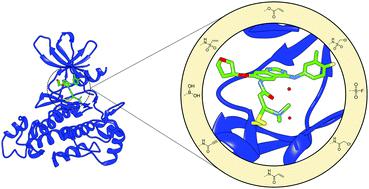当前位置:
X-MOL 学术
›
Chem. Soc. Rev.
›
论文详情
Our official English website, www.x-mol.net, welcomes your
feedback! (Note: you will need to create a separate account there.)
Advances in covalent kinase inhibitors.
Chemical Society Reviews ( IF 40.4 ) Pub Date : 2020-03-30 , DOI: 10.1039/c9cs00720b Ayah Abdeldayem 1 , Yasir S Raouf , Stefan N Constantinescu , Richard Moriggl , Patrick T Gunning
Chemical Society Reviews ( IF 40.4 ) Pub Date : 2020-03-30 , DOI: 10.1039/c9cs00720b Ayah Abdeldayem 1 , Yasir S Raouf , Stefan N Constantinescu , Richard Moriggl , Patrick T Gunning
Affiliation

|
Over the past decade, covalent kinase inhibitors (CKI) have seen a resurgence in drug discovery. Covalency affords a unique set of advantages as well as challenges relative to their non-covalent counterpart. After reversible protein target recognition and binding, covalent inhibitors irreversibly modify a proximal nucleophilic residue on the protein via reaction with an electrophile. To date, the acrylamide group remains the predominantly employed electrophile in CKI development, with its incorporation in the majority of clinical candidates and FDA approved covalent therapies. Nonetheless, in recent years considerable efforts have ensued to characterize alternative electrophiles that exhibit irreversible or reversibly covalent binding mechanisms towards cysteine thiols and other amino acids. This review article provides a comprehensive overview of CKIs reported in the literature over a decade period, 2007-2018. Emphasis is placed on the rationale behind warhead choice, optimization approach, and inhibitor design. Current FDA approved CKIs are also highlighted, in addition to a detailed analysis of the common trends and themes observed within the listed data set.
中文翻译:

共价激酶抑制剂的研究进展。
在过去的十年中,共价激酶抑制剂(CKI)在药物发现中重新流行。相较于非共价对应物,共价性具有独特的优势和挑战。在可逆的蛋白质靶标识别和结合后,共价抑制剂通过与亲电试剂反应不可逆地修饰蛋白质上的近端亲核残基。迄今为止,丙烯酰胺基团仍然是CKI开发中主要使用的亲电子试剂,它已被纳入大多数临床候选药物和FDA批准的共价疗法中。然而,近年来,已进行了大量努力来表征对半胱氨酸硫醇和其他氨基酸表现出不可逆或可逆共价结合机制的替代亲电试剂。这篇综述文章提供了2007-2018十年期间文献中报道的CKI的全面概述。重点放在弹头选择,优化方法和抑制剂设计背后的原理上。除了对列出的数据集中观察到的常见趋势和主题进行详细分析之外,还强调了当前FDA批准的CKI。
更新日期:2020-03-30
中文翻译:

共价激酶抑制剂的研究进展。
在过去的十年中,共价激酶抑制剂(CKI)在药物发现中重新流行。相较于非共价对应物,共价性具有独特的优势和挑战。在可逆的蛋白质靶标识别和结合后,共价抑制剂通过与亲电试剂反应不可逆地修饰蛋白质上的近端亲核残基。迄今为止,丙烯酰胺基团仍然是CKI开发中主要使用的亲电子试剂,它已被纳入大多数临床候选药物和FDA批准的共价疗法中。然而,近年来,已进行了大量努力来表征对半胱氨酸硫醇和其他氨基酸表现出不可逆或可逆共价结合机制的替代亲电试剂。这篇综述文章提供了2007-2018十年期间文献中报道的CKI的全面概述。重点放在弹头选择,优化方法和抑制剂设计背后的原理上。除了对列出的数据集中观察到的常见趋势和主题进行详细分析之外,还强调了当前FDA批准的CKI。











































 京公网安备 11010802027423号
京公网安备 11010802027423号